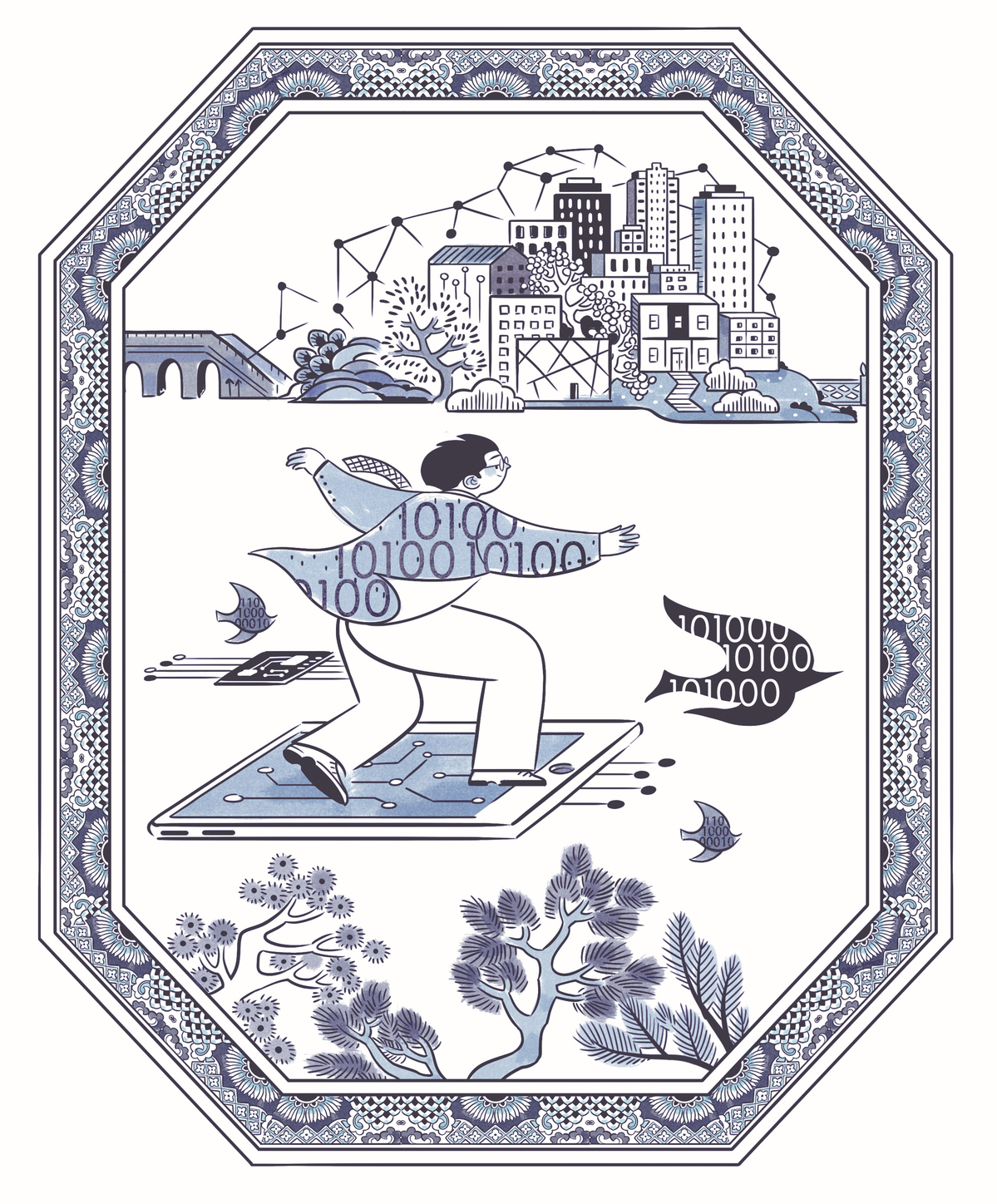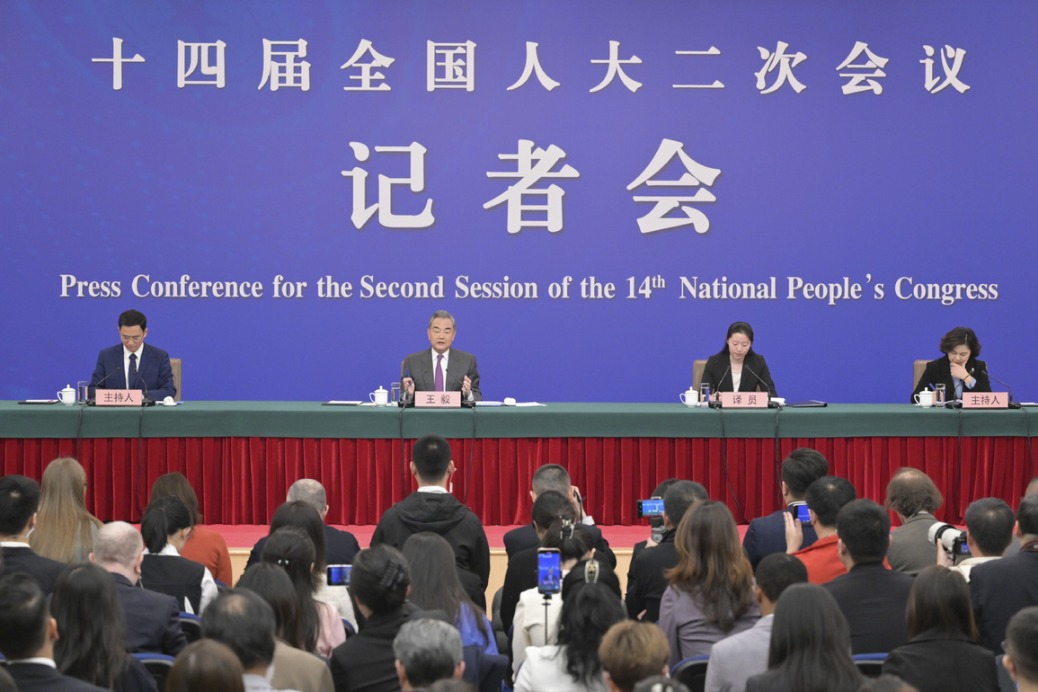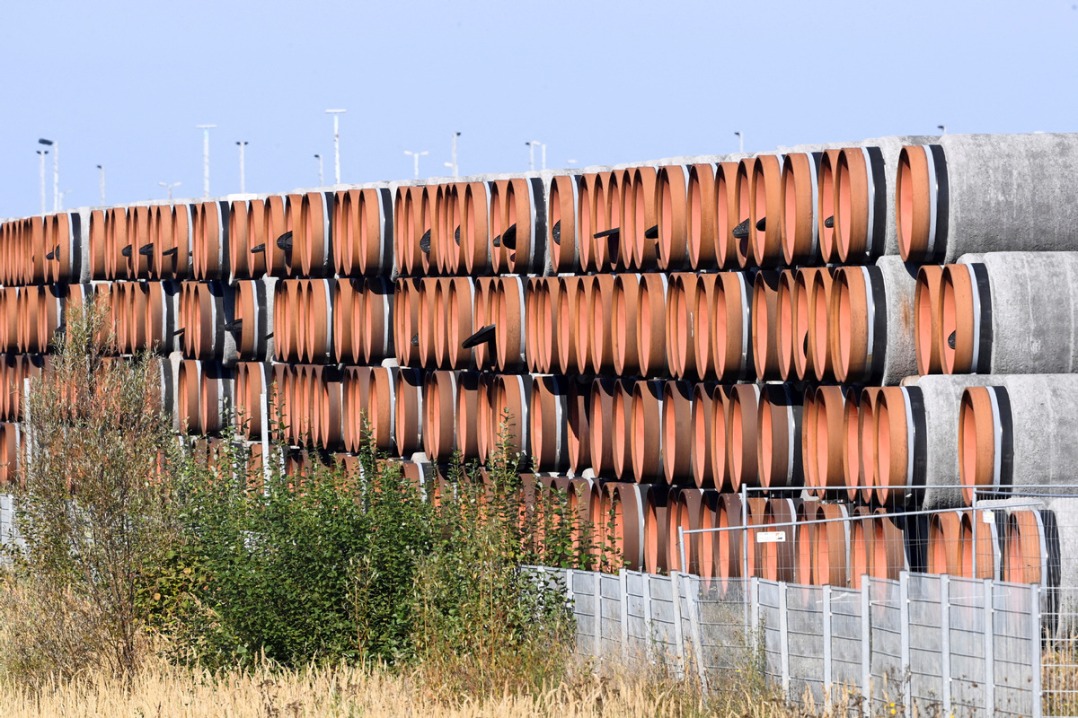Sci-tech innovation set to stabilize, bolster nation's industrial economy
By Ma Si | CHINA DAILY | Updated: 2022-03-11 07:21

Upgrades and initiatives aim to achieve high-quality development. Ma Si reports.
China's intensified efforts to pursue innovation-driven development and cultivate competitive small and medium-sized enterprises will help further stabilize supply chains and boost the nation's sprawling industrial economy, officials and experts said.
The government has pledged to promote scientific and technological innovation to upgrade industry, eliminate supply bottlenecks and achieve high-quality development through innovation, according to the 2022 Government Work Report.
It said China will make a big push to boost the core competitiveness of manufacturing, promote the stable performance of industry, ensure the supply of raw materials and key spare parts, and launch initiatives.
These factors will allow leading businesses to fully play their part in safeguarding the stability and security of industry and supply chains.
This year, China will enhance the policy of granting additional tax breaks for research and development costs, raising the deduction coverage for small and medium sci-tech enterprises from 75 percent to 100 percent.
Tax breaks will also be granted to businesses that invest in basic research, while policies will be improved on the accelerated depreciation of equipment and tools, and on preferential corporate income tax for new-tech and high-tech enterprises.
According to the report, the government will launch a number of industrial foundation reengineering projects, help upgrade traditional industries, accelerate the development of advanced manufacturing clusters and launch a national program to foster clusters of strategic emerging industries.
It will also nurture specialized and sophisticated enterprises that produce new and unique products.
The moves come after the country's manufacturing output exceeded 31 trillion yuan ($5 trillion) last year-the highest figure globally for the 12th consecutive year-which accounted for more than 27 percent of national GDP.
During the two sessions, Xiao Yaqing, minister of industry and information technology, who oversees the top industry regulator, said that despite challenges, China's industrial economy continued the trend of stabilization and recovery in the first two months of this year, with industry chains and supply chains becoming more resilient.
According to Xiao, the nation's manufacturing sector has become more technology-driven, thus speeding up digitalization and green transformation and reflecting the fact that China's industrial structure has been further optimized and upgraded.
Various levels of growth have also been seen in crucial sectors such as containers and computer chips.
Last year, the sales revenue of China's integrated circuit industry exceeded 1 trillion yuan for the first time, with year-on-year growth of 18 percent, according to estimates by the China Semiconductor Industry Association.
Core competitiveness
Despite that growth, Xiao said last month: "We are also clearly aware that there are still many problems. For example, the core competitiveness of the manufacturing sector is not strong, the quality of the supply system urgently needs to be improved and there are still many risks to the security and stability of industry and supply chains."
He also warned that domestic development faces the triple pressures of shrinking demand, supply shocks and weakening expectations amid the current external environment, which has become more complex, severe and uncertain.
In such a context, the ministry pledged measures-such as strengthening the resilience of industry chains, boosting the new information infrastructure and helping small and medium-sized enterprises-in an attempt to bolster the nation's sprawling industrial economy.
Li Yizhong, president of the China Federation of Industrial Economics, an industry association in Beijing, said that to remove hindrances to industrial upgrading and development, the industrial foundations need to be consolidated and weak links need to be strengthened.
"We need to work harder to enhance technological innovation and emergency responses, as well as speed up breakthroughs on key technologies, such as high-end chips and fundamental software," said Li, who is a former minister of industry and information technology.
More efforts are also needed to boost investment in digital infrastructure such as fifth-generation cellular wireless technology, aka 5G, and semiconductor manufacturing plants, he said.
"Previously, we embraced the foundry model in semiconductors-that is, we do chip design, testing and packaging but leave chip production and manufacturing to others," Li said.
"As a result, now we don't have the capability to manufacture high-end chips, which makes the domestic semiconductor sector vulnerable to possible sanctions from other countries. That is a weak link in the semiconductor industry that we must strengthen."
According to Li, deeper integration of the digital and real economies is also needed to stabilize supply chains, while internet companies and industrial enterprises should work more closely.
Creative centers
Eager to fuel the high-quality development of the manufacturing sector, the ministry said that more national manufacturing innovation centers will be set up to achieve breakthroughs in core technologies.
By the end of last year, 21 such centers had been established nationwide, covering areas including semiconductors, new energy vehicles and intelligent sensors.
To build a modern industrial system, experts called for more efforts to support small and medium-sized enterprises, which will help enhance the resilience of industry chains and boost the innovation and vitality of the industrial economy.
Yang Yuanqing, chairman and CEO of Lenovo Group, said SMEs are not only an indispensable part of the industry and supply chains, but also an important source of innovation, and they make a significant contribution to employment.
However, in the digital transformation process, many SMEs face challenges, such as weak digital tools and a lack of funds and talent.
Meanwhile, some are confused about how to embrace digitalization, said Yang, who is also a deputy to the National People's Congress.
A digital transformation acceleration platform could be built to provide digital evaluation consulting, training and funding solutions for SMEs, while more efforts are needed to develop an index system to better gauge the level of digitalization at SMEs in order to offer more targeted help, he added.
According to Yang, established companies such as Lenovo should play a bigger part in driving the joint innovation and development of SMEs in both the upstreams and downstreams of industry and supply chains.
He said Lenovo has built a digital management platform with its domestic SME suppliers to help them achieve digital transformation, and it has also supported local competitive SMEs via venture capital investment and by purchasing their technologies and components.
'Little giants'
Keeping the crucial position of SMEs in mind, the Ministry of Industry and Information Technology aims to help cultivate about 3,000 "little giant" companies this year, which will focus on a market niche and master key technologies with a strong innovation capacity.
The plan is part of the ministry's broader push to trigger creativity across SMEs and foster a better business environment for them.
China aims to cultivate 1 million innovative SMEs by 2025, according to a government guideline on the development of SMEs during the 14th Five-Year Plan (2021-25).
"For China, innovation capabilities and well-rounded supply chains have played an increasingly prominent role during the country's economic development," said Li Chao, chief economist at Zheshang Securities.
"The 'little giant' companies, which are able to fill certain weak spots for the country, will help improve the industry and supply chains and enable China to become a manufacturing powerhouse."
A research note published last year by investment bank China International Capital Corp said the average revenue growth rate of listed Chinese "little giant" companies had outperformed that of nonfinancial and nonpetrochemical companies listed in the A-share market.
They will likely become future "hidden champions" like those (comparable companies) in Germany, and may even make a big contribution to industrial growth, it said.























